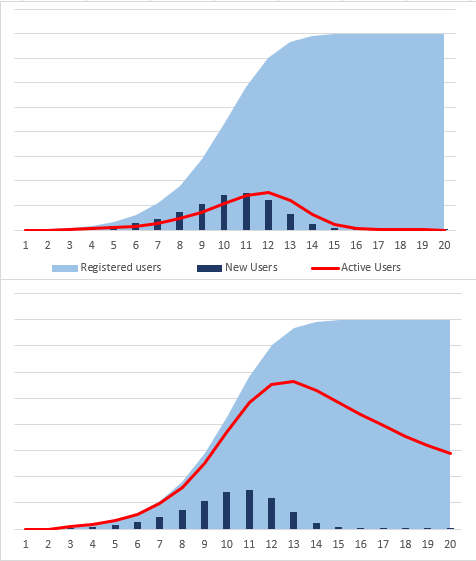- ARPDAUPosted 12 years ago
- What’s an impressive conversion rate? And other stats updatesPosted 12 years ago
- Your quick guide to metricsPosted 12 years ago
Have pizzazz, not polish: Free-to-play Design Rule 10
AAA developers have a habit of looking at free-to-play games and saying “The graphics look rubbish on that. Just wait until a proper game maker has a go. We’ll show them what a proper game looks like.”
Then they make a game and it falls flat on its face.
 That’s because AAA developers focus on polish, not pizzazz. They target the rational brains of their players, not their emotional hearts. They are putting their development effort in the wrong place.
That’s because AAA developers focus on polish, not pizzazz. They target the rational brains of their players, not their emotional hearts. They are putting their development effort in the wrong place.
One AAA studio I know once had a programmer spend an entire year simulating the motion of the planets and stars in the sky so that any astronomers playing would be able to tell what time of year it was by the alignment of the heavenly bodies in the night sky above the game world.
The only problem was that, to solve a different problem, a different design team removed the ability to look up in the game, which meant that the only way to see the sky was to search out puddles and look for the sky reflected in the still water.
The game still shipped with this feature in place.
 Take, in contrast, these screenshots from My Horse by Natural Motion. To a AAA developer, the image looks terrible. The eight buttons look as if they have barely been touched by an artist, let alone one trained in the disciplines of AAA development. But the emotional feedback from pressing all eight of those green buttons, watching rewards shoot up to your XP and cash bars, the trailing stars, the ker-ching and the applause: that’s pizzazz
Take, in contrast, these screenshots from My Horse by Natural Motion. To a AAA developer, the image looks terrible. The eight buttons look as if they have barely been touched by an artist, let alone one trained in the disciplines of AAA development. But the emotional feedback from pressing all eight of those green buttons, watching rewards shoot up to your XP and cash bars, the trailing stars, the ker-ching and the applause: that’s pizzazz
(It’s hard to show this unless you play the game. Download My Horse and try it out for yourself. It’s free.)
Pizzazz rewards the player at an emotional level. It says “well done. You’ve got something right”. A good free-to-play designer looks for things that they want the player to do, and makes sure that there are rewarded – practically, emotionally, visually, aurally. It’s not about lens flare or high poly counts or nice reflective menus.
In My Horse, the Care and Work screens are an appointment mechanic, designed to make players come regularly. Rather than wasting effort on the visual look of the screen, Natural Motion put all its effort into the rewards a player gets for completing the appointment. Which is the core objective of the feature, and feeds directly into retention in the GAMESbrief free-to-play spreadsheet.
Pizzazz is not about looking pretty (well, OK, it is). It is not about making the game’s graphic designer think he or she is cool. It’s about rewarding players for doing the things that matter to them and to you. It is about building an emotional connection.
Leave at least a week at the end of your development for adding pizzazz. It will totally be worth it.
The next post in this series will continue with advice on building an emotional connection with players, by looking at how your game should start.












